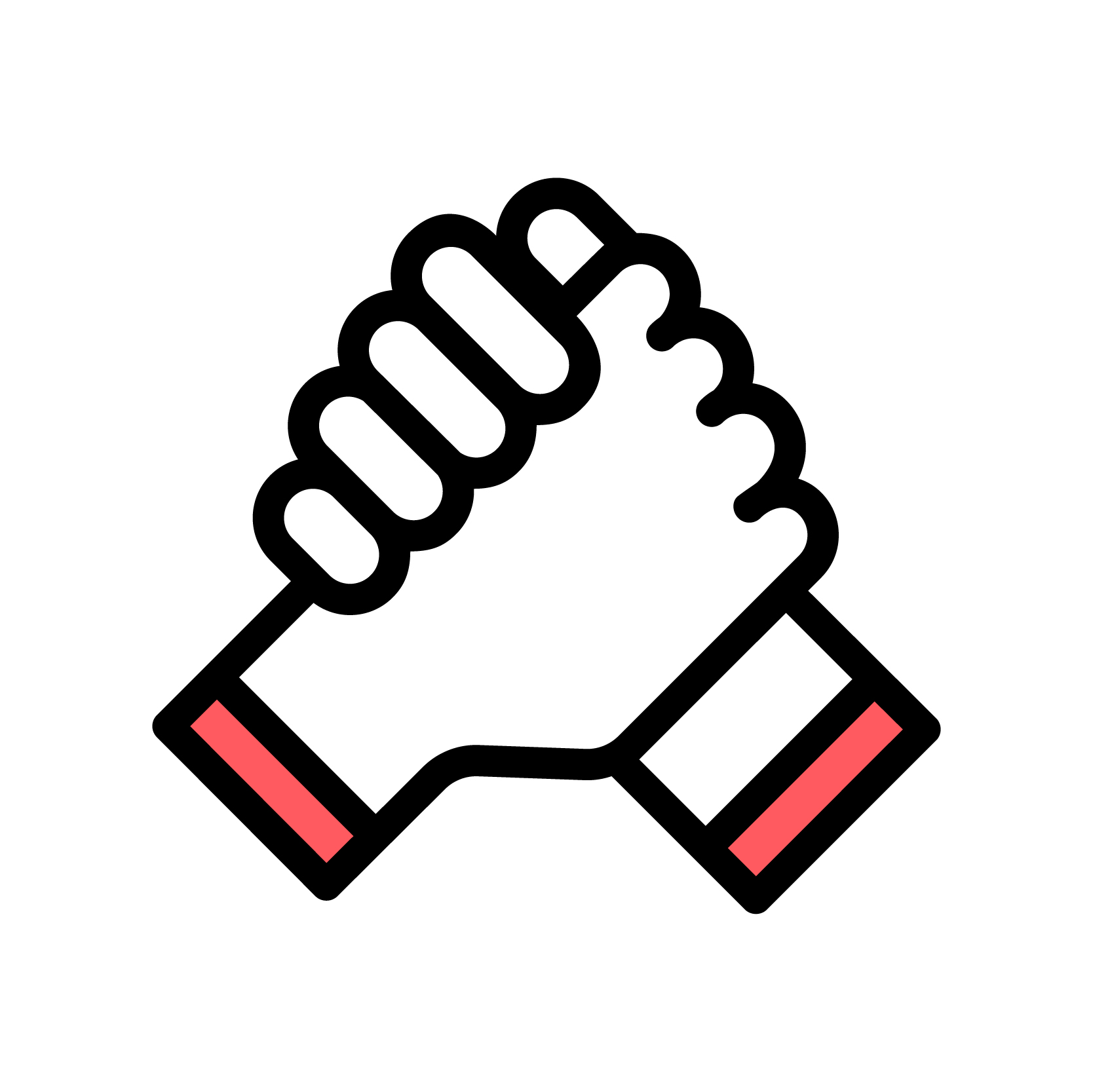We all have been situations in which we wanted a behavioural change. It could be you want your children to behave politely. It could be you wanted your client to approve a budget. It could be you want your manager to grant you extra time to work on a project. It could be you need community members to contribute to preventing littering actively. It could be you wanted employees to embrace organisational change. No matter what situation you were ever in, we have all experienced once or twice that getting someone to do things is hard. At least, the way we often approach it. There is a more effective approach to change. This is what this blog post is all about.
Behavioural change; from pushing to easing
Now, think back to a situation you had to influence someone. Tell me, was it easy to get people to change their behaviour in the direction you wanted them to move? Did they say ‘yes’ right away, or do you remember it took some persuasion? Maybe it was heavy lifting even? I remember I sometimes even used some force: ‘If you don’t eat dinner, you won’t get dessert.’ Or, for example, have you ever tried to convince a client by first giving them a stellar presentation and by following this up by emails or phone calls, making sure you gave them all reasons to make them realise your offer is one they can’t refuse?
It might have worked. But it takes quite some effort, right? It is hard work pushing someone into the direction you want them to move. Change is hard. We as humans can change, but we are pretty risk-averse and rather accept our suboptimal situation than moving in an unknown direction. In behavioural science, two potent forces that keep people in current behaviour are status quo bias and loss aversion. We are simply afraid of losing what we have right now and take our current state (status quo) as our baseline or reference point for future decisions. Any change from that baseline is perceived as a loss. Inertia being the result. So, no wonder it takes effort to change people.
What if I tell you there is a better way to generate change? That takes far less effort. That steps away from our natural inclination to push people into doing things but takes a different approach. Because that’s what we often do, we use some form of pushing to move people. We do follow-up calls; we give arguments, provide extra information, deliver facts and figures, show results, send reminders, etc. I call this pushing as it starts at ‘us’. We make the calls, write documents, round up reasons and then deliver them to the persons we want to convince or influence. I love this quote from Jonah Berger. He says:
‘The intuition [of pushing] comes from physics. Imagine there’s a chair in your office, and you want to move that chair. We often push it. Want it to get it to go in a particular direction? If we push in that direction, it goes. The chair moves across the floor just like we want. But when it comes to the social world, when it comes to applying this intuition to others, changing minds, action, and organisations, there’s an important difference. Because when we push people, they don’t just go along as the chair does. When we push people, they often push back‘.
Behavioural change; a matter of psychology, not physics
So, the message is clear:
When we have to convince people, it is not a matter of physics but psychology.
And that makes me come back to the accelerator of human change: It is thinking outside-in instead of inside-out. And not taking your product, service or policy as a starting point but taking humans as a starting point. More specifically, gaining a deeply human understanding of how people come to decisions and what is preventing them from deciding to act (or to act now instead of procrastinating). It is a hard inclination to fight, to not start at ourselves. We are trained, surrounded with and used to at our brand, product, organisation or policy. A tool that helps you truly get human-centred insights is our SUE | Influence Framework©. It helps you unlock all the forces that stand between current and desired behaviour.
It helps you to fight your assumptions. We all assume we know our clients, employees, partners, citizens think or need, but we often don’t. It’s another bias we need to fight: The expert fallacy. As most of us are paid professionals, we are assumed to be experts in our job. It becomes false authority when it is assumed that the opinions of a recognised expert in one area should be taken to heart in another area. So, if you are an expert in human psychology, your appeal to authority to have an opinion on what moves people’s choices and behaviours is valid. When you are an expert in a different domain, you might be fooled by your own of someone’s else’s opinion.
How to avoid this fallacy is quite simple. It takes two things: unbounded curiosity and interviewing six people. By interviewing, I mean talking to six people and genuinely listening to them, observing them, stepping into their shoes and turning your empathy radar way up. With this, you’ll be making the shift from focusing on ‘us’ that makes us forget the person to concentrate on ‘them’ that helps us move away from persuading by pushing.
You will uncover the underlying motivations people have to show behaviour. You’ll discover the behavioural boosters that may propel people forward towards the desired behaviour, but you’ll also identify the behavioural bottlenecks that hold someone back. These are all essential elements. You can leverage every one of the forces in the SUE | Influence Framework© to come up with interventions that will predictably change minds and shape behaviours.
Want to learn how to design behaviour?
Join our two-day Fundamentals Course and master a hands-on method to use behavioural science to develop ideas that change minds and shape behaviour.
Behavioural change: Willingness and capability
However, human insight is one thing; you need to translate it into tangible interventions. If you want to change behaviour, you have two strategies: You can make someone want to change (boosting their willingness to change), or make sure someone can change (improving their capability to change). You can imagine that willingness to change requires some form of cognitive action. It has to do with motivation. However, it can be pretty daunting to stay motivated to us humans to set our minds on doing things for a more extended period. When we find ourselves in uncertain situations and new things (thus also new behaviours) are uncertain. As we discussed earlier, we are often okay with the status quo, even if it is not optimal. We often overvalue what we have.

Maybe you have ever experienced such a motivation wave yourself. Let’s say you genuinely wanted to eat healthy all day. You did great at breakfast (smoothie), coped at lunch (homemade salad), pecked away at some almonds in between, but then it becomes four in the afternoon. You are tired, you worked hard, and someone puts a bag of potato chips at arm’s reach. You truly have to push yourself hard to persevere in your new, healthy behaviour. Often, we lose this internal battle. Even more so, we can come up with outstanding arguments why we are deserving of some potato chips (if you want to understand why our human brain works this magic read this blog on the work of Kahneman). To make the point, you might see already that if we don’t want to rely on pushing as an influence strategy, working on willingness may not be our best option. So, what is?
The key to behavioural change: Take away bottlenecks
If you want to change behaviour there is one place where you need to start and what you need to consider. To successfully change behaviour we need to:
Start with taking away behavioural bottlenecks, the barriers.

We can do this by coming up with capability interventions: Focusing on taking away friction and lowering hurdles and making the desired behaviour easier to perform. Or as Berger states in his book ‘The Catalyst – How to change anyone’s mind‘: ‘The easier it is to try something, the more people will use it, and the faster it catches on’. We can easily replace ‘try’ with ‘do’, as the same goes for behaviour. The easier is it to do something, the faster it will catch on. The secret ingredient to change behaviour therefore is:
Not pushing someone in desired behaviour but easing them into it.
That’s why, when looking back again at the SUE | Influence Framework©, the real power lies in taking away anxieties and piggybacking on (or replacing) comforts. You also can influence minds and shape behaviour by stressing pains and highlighting gains but see them as cherries on the cake. I feel they are great add-ons completing the influence picture. Not to be denied add-ons, but still:
The actual name of the game we are in is removing obstacles.
To do so, you need to understand which behavioural bottlenecks your target group is experiencing. It would be best if you shifted your focus from us to them. So, whenever you catch yourself giving more arguments, sending over more information, coming up with reasons to buy, stating facts or sending reminders, put yourself on hold. And remember, there is a different approach to change minds, behaviour, and action with a simple reminder: If it were easy, everyone would do it.

I bet you never thought of a quote that glorifies hardship and discipline to make perfect sense to help us human beings to accomplish more by, in fact, taking motivation out of the equation. Life can be immensely satisfying, don’t you think?
BONUS: free ebook 'How to Convince Someone who Believes the Exact Opposite?'
Especially for you we've created a free eBook 'How to Convince Someone who Believes the Exact Opposite?' For you to keep at hand, so you can start using the insights from this blog post whenever you want—it is a little gift from us to you.
How do you do. Our name is SUE.
Do you want to learn more?
 Suppose you want to learn more about how influence works. In that case, you might want to consider joining our Behavioural Design Academy, our officially accredited educational institution that already trained 2500+ people from 45+ countries in applied Behavioural Design. Or book an in-company training or one-day workshop for your team. In our top-notch training, we teach the Behavioural Design Method© and the Influence Framework©. Two powerful tools to make behavioural change happen in practice.
Suppose you want to learn more about how influence works. In that case, you might want to consider joining our Behavioural Design Academy, our officially accredited educational institution that already trained 2500+ people from 45+ countries in applied Behavioural Design. Or book an in-company training or one-day workshop for your team. In our top-notch training, we teach the Behavioural Design Method© and the Influence Framework©. Two powerful tools to make behavioural change happen in practice.
You can also hire SUE to help you to bring an innovative perspective on your product, service, policy or marketing. In a Behavioural Design Sprint, we help you shape choice and desired behaviours using a mix of behavioural psychology and creativity.
You can download the Behavioural Design Fundamentals Course brochure, contact us here or subscribe to our Behavioural Design Digest. This is our weekly newsletter in which we deconstruct how influence works in work, life and society.
Or maybe, you’re just curious about SUE | Behavioural Design. Here’s where you can read our backstory.









